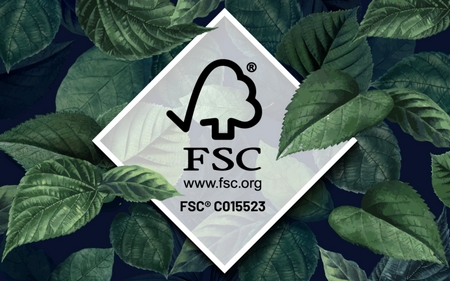

We ship throughout Europe free of charge and without further costs! On request also anonymous and with your own delivery bill. More
Products discovered cheaper elsewhere? We undercut the price by 5%. Just use our lowest price guarantee
For printers and agencies we offer special reseller conditions

On this page you will find our print data guidelines, which should help you with the design of your data. Please note the respective layout templates and, if applicable, information in these templates.
We've listed the two most common mistakes you make when creating print files, and we'll tell you how to work around them in the posts.
Which color code provides the best black shade is and remains controversial. Our experience has shown that you can achieve a deep black in areas and shapes with the Cmyk code C 30, M 30, Y 30, K 100. Texts and lines, on the other hand, should only be created in a pure black: C 0, M 0, Y 0, K 100, otherwise undesirable color results may occur. Please note that this is only a recommendation. Tastes are quite different in this color range.
Overprinting means that two different colors are printed on top of each other, creating a third color. To avoid the risk of an unexpected color result, make sure that overprinting is not enabled in your file.
Please note that overprinting is a design tool that will not be reported as an error during the paid professional data check by our experts. Especially in packaging, our template should be inked in a spot color and set to overprint. However, this process should only be used here.
In order for the characters/fonts in your file to print faithfully, they must be embedded. If embedding is not possible for you, the characters/fonts can also be converted to paths by the program you used to create the file. How this works in Adobe Illustrator or Adobe Photoshop can be found here. However, this second option does not give you an absolute guarantee of error-free printing. For large format printing, we recommend that you keep to the minimum font size of 12 pt and the minimum line width of 0.5 pt. For small format printing, stick to the minimum font size of 5 pt. For the lines, a minimum thickness of 0.25 pt is also possible here.
You can select the PDF export preset "High quality print" in the Adobe programs, so there will be no problems. Alternatively, you can send us a PDF x3:2002 as well as a PDF x4.
To create your print file, you can use the commonly used programs for graphics editing. For vector format, for packaging for example, we recommend Adobe Illustrator, for raster format (images) Adobe Photoshop. Adobe InDesign is an excellent program for creating multi-page documents. Adobe Acrobat allows you to check your file one last time before sending it (preflight).
Even if all three programs are suitable, we recommend Adobe Illustrator for all cases. Here you can create wonderful vector-based graphics, texts and layouts and 90% of our templates can be ideally edited in this software. So in many cases you have to delete elements from our templates again. Unfortunately, this does not work with Adobe Photoshop.

We require a bleed to have a minimal margin when cutting your artwork. To create the bleed, the graphic/background color must be extended to the edge.
The print files for small format printing require the following bleeds:
- Business cards: 2 mm on all sides (so for 8.5x5.5 cm endforms, a data format of 8.9x5.9 cm)
- formats over 9x5 cm (e.g. flyers and leaflets): 1 mm on all four sides
- print files for magazines and brochures (multi-page files): 3 mm bleed all around.
All print files for large format printing on any type of media require at least 1 mm bleed on each side. In the case of accessories such as reinforcements and eyelets, products printed on both sides or framed products, specific bleeds are required, so we advise you to use the file template available for each product on the website, as well as to consult the instructions.
However, this rule does not affect the following products because they already have a bleed area in their template:
- Table flyer holder
- Table displays
- Merchandise displays
- Packages
Look for a green outer trim line.
Files for small and large format printing must be created in CMYK color mode (cyan, magenta, yellow, black) with Fogra 39 color profile. Files created in RGB color mode or with Pantone colors are subjected to standard color conversion.
In four-color printing, fluorescent colors, gold or silver cannot be printed. There are many different screens, and each may be calibrated differently. Therefore, the final printed result may not perfectly match the screen representation.
So before you send us the final print file, we recommend you to order our CMYK color guide, which you can use to match numerous colors:
The optimal resolution of the files for small format printing is 300 ppi. For large format printing, the optimal resolution must be between 100 and 150 ppi in real size. We accept files in scale only for formats over 500 cm. In order to print the file properly, the resolution must also be proportional to the scale used. For example, if you want a 500x100 cm print and upload the file at 1:10 scale, the resolution must be 1,000 ppi. This will allow the file to be printed in 100 ppi (at a scale of 1:1). Before uploading the file, please make sure that the proportions are correct in relation to the bleeds provided.